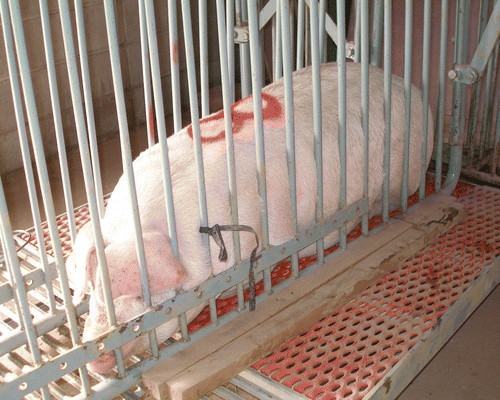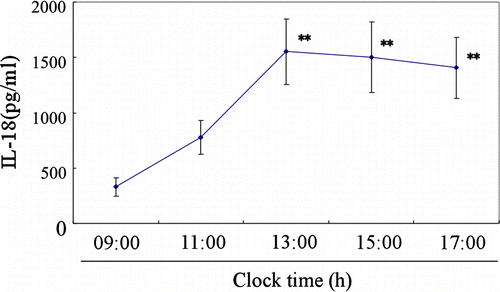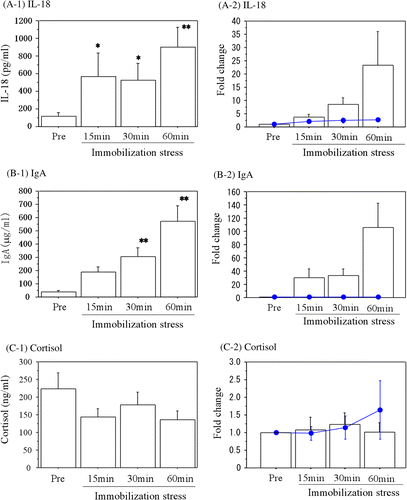Figures & data
Table I. Primers and PCR conditions for the RT-PCR of Porcine IL-18 and β-actin.
Figure 1. Immobilization stress. The pigs were restrained by being enclosed in a steel cage for 60 min. Saliva samples were taken as described in the Materials and methods.

Figure 2. IL-18 expression in pig salivary glands (n = 12 submandibular glands) by RT-PCR. Total RNA was isolated from the salivary glands, and the RT-PCR analyses for porcine IL-18 and β-actin were performed as described in the Materials and methods. Each PCR product size is shown at the right. M: 100 base ladder marker.

Figure 3. IL-18 expression in pig salivary glands by immunohistochemistry. Results are shown for (A) parotid gland, (B) submandibular gland, and (C) sublingual glands. (D) Adrenal glands were used as a positive control. Arrows indicate zona arcuata and zona fasciculate of adrenal cortex. Arrowheads indicate the ducts of salivary glands with IL-18-positive staining. Each picture is representative of a similar pattern of staining from four different pigs. Bar = 50 μm.

Figure 4. Diurnal rhythm of IL-18 concentrations in pig saliva. Data are the mean ± SE values of 12 measurements from 3 experiments on 3 different days using 4 different pigs. Asterisks indicate significant differences compared with the basal values at 09:00 h (Bonferroni test, **p < 0.01).

Figure 5. Changes in salivary IL-18 and IgA during immobilization stress in pigs. (A-1) The concentrations of IL-18, (B-1) IgA, and (C-1) Cortisol are shown. The fold changes from the basal values are also shown for (A-2) IL-18, (B-2) IgA, and (C-2) Cortisol. Data are the mean ± SE values from 13 different pigs. Lines and filled circles show the changes in the control samples. Asterisks indicate significant differences compared with the prestress values (Bonferroni test, *p < 0.05, **p < 0.01).
